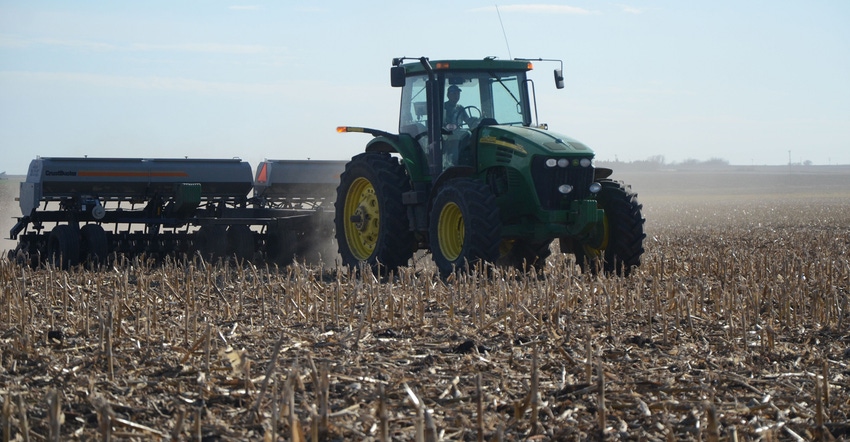July 21, 2017

By Daren Redfearn
Vigor testing is particularly valuable for seed that has been held over, stored under unknown or unfavorable conditions, or will be planted under less-than-ideal soil or weather conditions. Often, many stand vigor problems result from saved or bin-run seed. Conducting a vigor test provides a better estimate of field performance.
Some common laboratory tests used to predict seed vigor include accelerated aging, cold treatment, electrical conductivity and various seedling vigor classification tests. However, a simple on-farm vigor test can be performed using 6- to 10-inch pots and sand.
Using one pot for each desired planting depth, fill each pot about three-fourths full with sand. Place 25 seeds on top of the sand. Cover the seed with 1 inch of additional sand. It is important to water early and often because the sand will dry out quickly. Every three to four days for two weeks, count the total number of emerged seedlings (do not pull them up). At the end of two weeks, multiply the total number of emerged seedlings at the last count by 4. This number will estimate the field emergence percentage at that planting depth. Repeat the process in other pots for different planting depths. This information can be used to adjust the recommended seeding rates if desired.
Backing up a bit, the first and one of the most important decisions a producer has to make when planting a cover crop is the species to plant. High seed prices for many cover crop species mean that producers should pay close attention to seeding management, so that reduced establishment does not occur. It is also important to note that seed prices could make up a substantial portion of the establishment costs.
As a general rule, most cover crops are planted into non-ideal seedbeds. This alone may reduce some of the potential for a successful seeding. If the seed doesn't come into direct contact with the soil, seed germination will not occur. Likewise, if any residual herbicides are present, seed germination and seedling vigor could be reduced and result in a failed seeding. Previous herbicide programs should be considered before cover crops are planted following row crop production to eliminate the possibility of poor establishment due to residual chemicals.
Determining right seeding rate
Regardless of cover crop species chosen, it is critical to remember the importance of high seed germination and seed purity. Seed germination and seed purity analysis is required by law for marketed seed. These values are listed on the seed tag. If seed germination and purity are both low, increase the seeding rate to achieve an acceptable seeding rate for live seed. The equation used to quickly adjust the recommended seeding rate based on seed quality is: PLS seeding rate per acre ÷ percent PLS.
For example, if you plant 60 pounds of pure live seed (PLS) per acre, but the germination is 75% and the seed purity is only 70% (0.53 PLS), then almost twice the amount of low-quality seed (60 ÷ 0.53 PLS = 113 pounds of seed per acre) must be planted to equal 60 pounds of high-quality seed, with 95% germination and 95% seed purity (0.90 PLS) (60 ÷ 0.90 PLS = 67 pounds of seed per acre).
Weeding out bad seed
Reduced seed purity can be caused by inert material, other crop seed, weeds and noxious weeds. Inert material is usually not a risk to seeding success since it can be easily accounted for by adjusting the seeding rate. For cover crops, other crop seed is also not a concern, since grain produced from cover crops is not often marketed. However, the presence of weeds, noxious weeds in particular, poses the greatest threat. Even if seed has been cleaned, weed seed that is similar in size, shape or density can be difficult to remove during the cleaning process.
Standard germination tests tell only part of the story. These tests are conducted under ideal temperature and moisture conditions, and may not provide information about seed germination or seedling establishment and subsequent plant growth. The forgotten factor in the planting and establishment process is related to seed vigor. Seed that has an acceptable germination percentage but low vigor may not grow well or even germinate under adverse field conditions. This process may take some extra time and planning, but could be valuable for increasing cover crop establishment.
Redfearn is a Nebraska Extension forage and crop residue specialist.
You May Also Like




